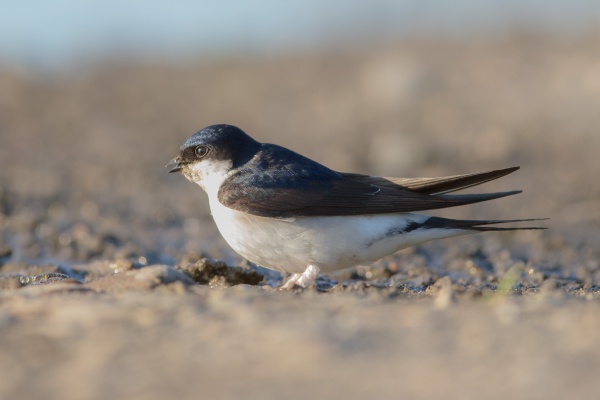Facts About Common house martin
The common house martin, also known as the northern house martin or simply house martin, is a migratory bird belonging to the swallow family. It breeds in Europe, North Africa, and parts of the Palearctic region, before migrating to sub-Saharan Africa and tropical Asia to evade the winter chills.
You can easily identify a house martin by its blue head and upper body, white rump, and pristine white underparts. These birds are typically found in open countryside and areas near human settlements. They closely resemble other martins in the Delichon genus, with two recognized subspecies.
The name "house martin" is derived from their nesting habits: they often build nests on man-made structures. These birds use mud pellets to craft enclosed cup-shaped nests under eaves or similar locations on buildings, frequently forming colonies. Despite facing threats from predators like the Eurasian hobby and parasites such as fleas and mites, the house martin is not globally threatened due to its wide range and stable population.
The house martin was first scientifically described by Linnaeus in 1758 and was later classified in the Delichon genus by Horsfield and Moore in 1854. The genus name is an anagram of the Greek word for "swallow" and the species name "urbica" means "of the town" in Latin. There are two subspecies: the western nominate race and an eastern variant, each differing slightly in range and appearance.
House martins breed in colonies and return to Europe between April and May. They construct their nests on human structures and lay four or five white eggs per clutch, typically raising two broods a year. Their hatching and fledging success rates are quite high. These birds primarily consume flying insects, hunting at varying altitudes depending on the season and habitat.
While the house martin's global conservation status is of least concern, its populations in Europe and Britain are declining. Factors such as adverse weather, pesticide usage, and competition with other species can impact their numbers. Historically, they have thrived near human settlements and in open habitats, but these same factors can also pose risks.
In culture, the house martin appears in literature and heraldry, though not as prominently as its relative, the barn swallow.

 Poland
Poland